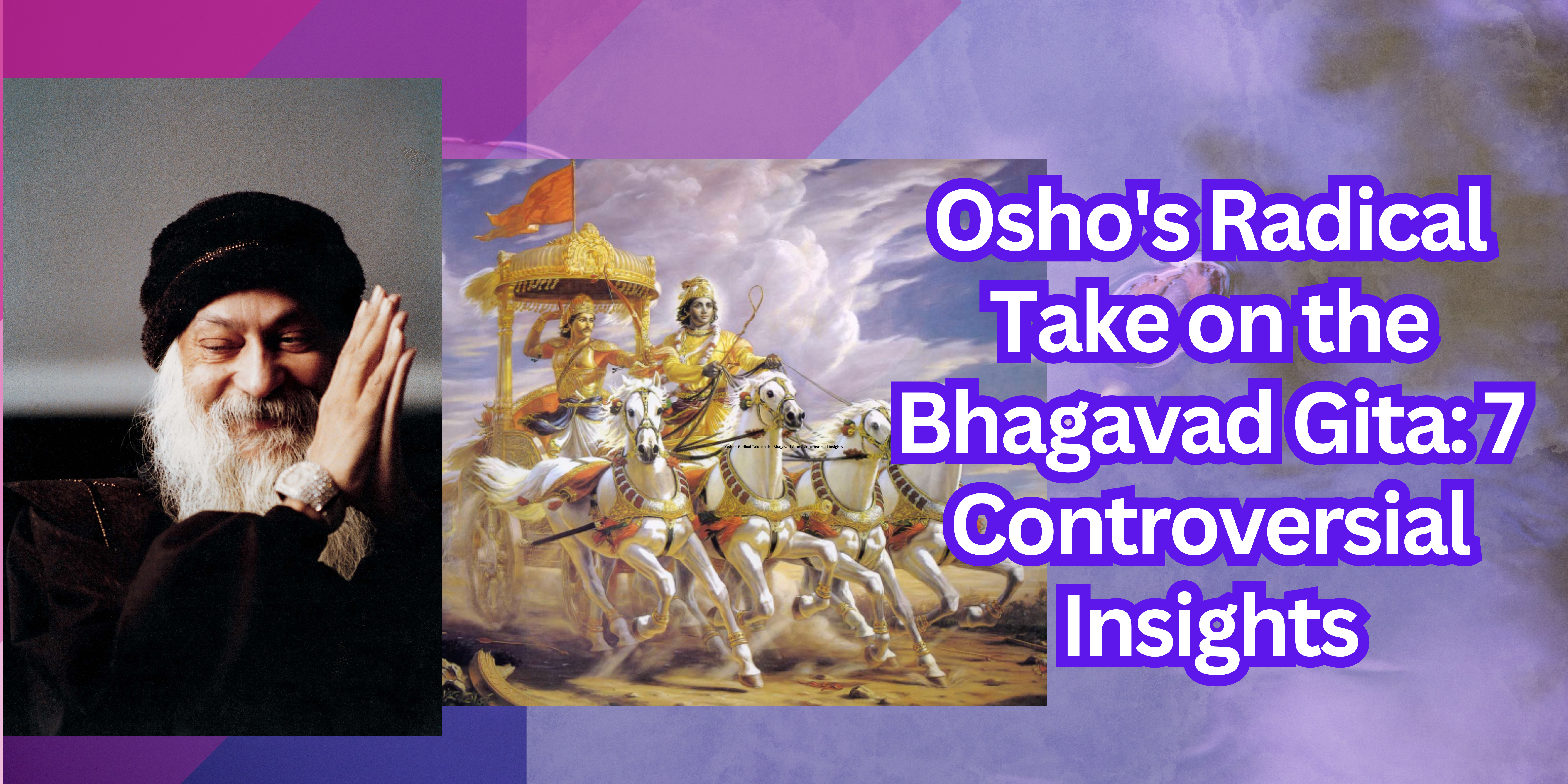Hey there, fellow seekers and curious minds!
Ever picked up the Bhagavad Gita and thought, “Whoa, this is heavy stuff”? Well, you’re not alone. This ancient Hindu text has been twisting brains for centuries. But just when you think you’ve heard every possible interpretation, Osho is the wild-haired, twinkle-eyed guru who never met a convention he didn’t want to shake up.
Now, I’ll be honest. When I first heard about Osho’s take on the Gita, I was skeptical. Who was this guy to reinterpret one of Hinduism’s most sacred texts? But the more I dug into his ideas, the more fascinated I became. Love or hate him (and boy, do people do both); you can’t deny that Osho’s perspective on the Gita is nothing short of mind-bending.
So, buckle up, We’re about to dive into seven of Osho’s most eyebrow-raising insights on the Bhagavad Gita. Whether you’re a die-hard Gita fan, an Osho enthusiast, or someone who loves a good spiritual shake-up, I promise you’re in for a wild ride. Ready to have your preconceptions challenged? Let’s jump in!
Osho’s 7 Controversial Insights on Bhagavad Gita
1. Reinterpretation
Osho approached the Bhagavad Gita with a fresh perspective, often challenging traditional interpretations. He believed in making ancient wisdom relevant to modern times.
Quote: “I am not concerned with Krishna’s Gita – I am concerned with my own Gita. And I would also like you to be concerned about your own Gita.”

2. Critique of violence
Osho was critical of interpretations that used the Gita to justify violence. He argued that the true message was about inner conflict, not physical warfare.
Quote: “Krishna is not really telling Arjuna to fight the war. Krishna is simply saying: Whatever happens in existence, you accept it totally.”

3. Emphasis on action
Osho emphasized the Gita’s message of karma yoga, but reinterpreted it to focus on living fully in the present moment.
Quote: “Act totally, but remain a witness. This is the whole message of the Gita.”

4. Transcendence of duality
Osho appreciated the Gita’s teachings on moving beyond opposites, seeing this as key to spiritual growth.
Quote: “The whole teaching of the Gita is how to transcend the dualities. Because once you transcend dualities you transcend mind.”

5. Critique of organized religion
Osho used his commentary on the Gita to criticize what he saw as the rigidity and dogma in organized Hinduism.
Quote: “Religions have become hiding places for all kinds of nonsense. The Gita is beautiful, but Hinduism is not.”

6. Inner revolution
Osho interpreted the Gita’s battlefield as a metaphor for inner struggle and personal transformation.
Quote: “The real war is always inner. And the real victory is also inner. Arjuna’s dilemma is everybody’s dilemma.”

7. Synthesis with other philosophies
Osho often combined his interpretation of the Gita with ideas from other spiritual traditions and modern psychology.
Quote: “I am bringing together East and West, the materialist and the spiritualist. My Gita is for the whole man.”

These interpretations reflect Osho’s overall approach to spirituality, which emphasized personal experience, questioning traditional interpretations, and synthesizing ideas from various sources. His views were often controversial and challenged conventional understandings of Hindu scriptures.
Conclusion
So, what do you think? Is Osho onto something with his radical reinterpretation of the Gita? Or is he way off base? Maybe it’s a bit of both? Whatever your take, I hope this little dive into Osho’s world has sparked some interesting thoughts and conversations.
Remember, at the end of the day, the best Gita is the one that speaks to you. Whether that’s the traditional interpretation, Osho’s version, or your unique understanding – that’s the beauty of this timeless text. It’s got something for everyone, even the rebels and radicals.
Keep questioning, keep exploring, and who knows? Maybe you’ll end up writing your own Gita someday. Until then, stay curious, my friends!

